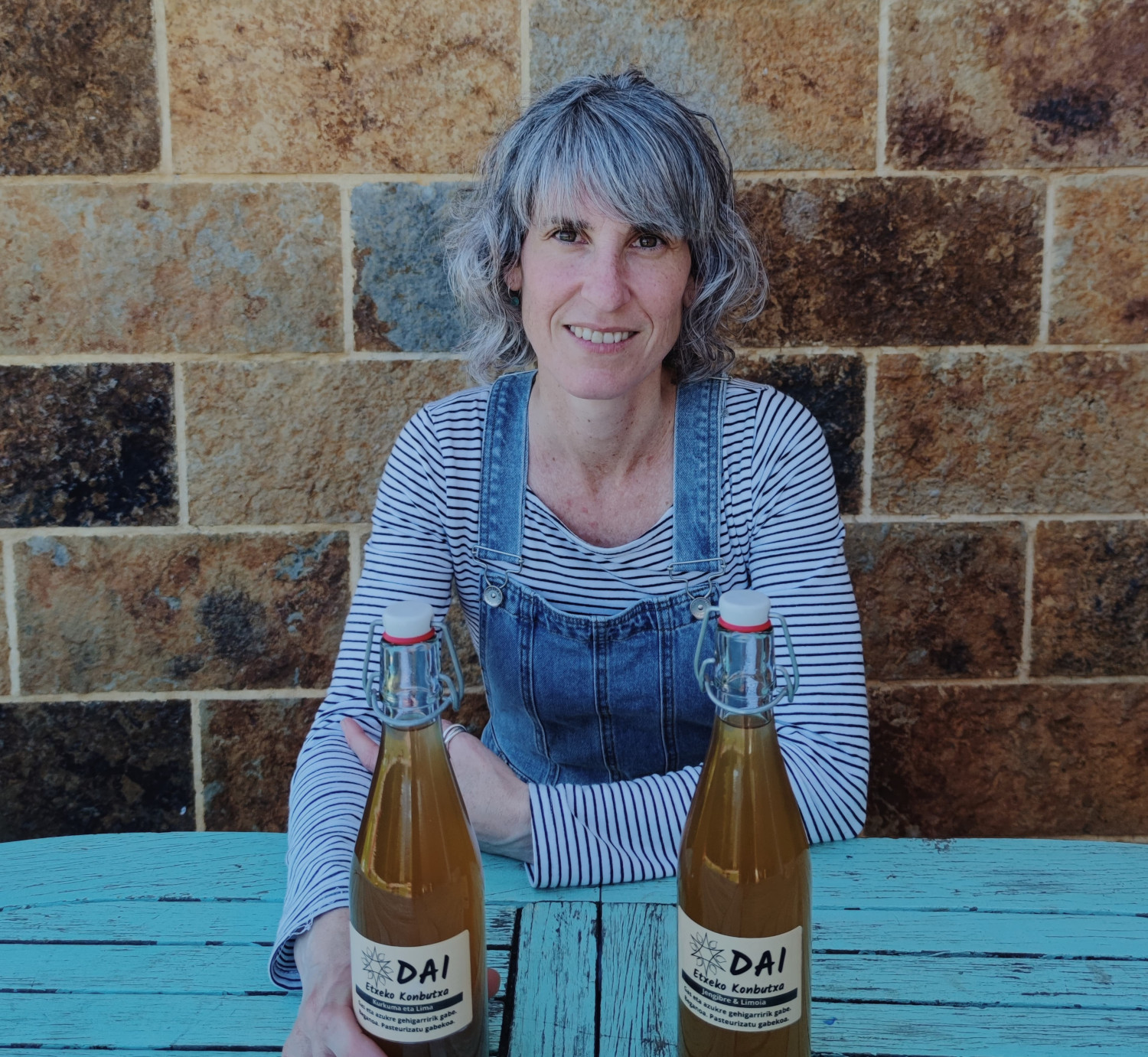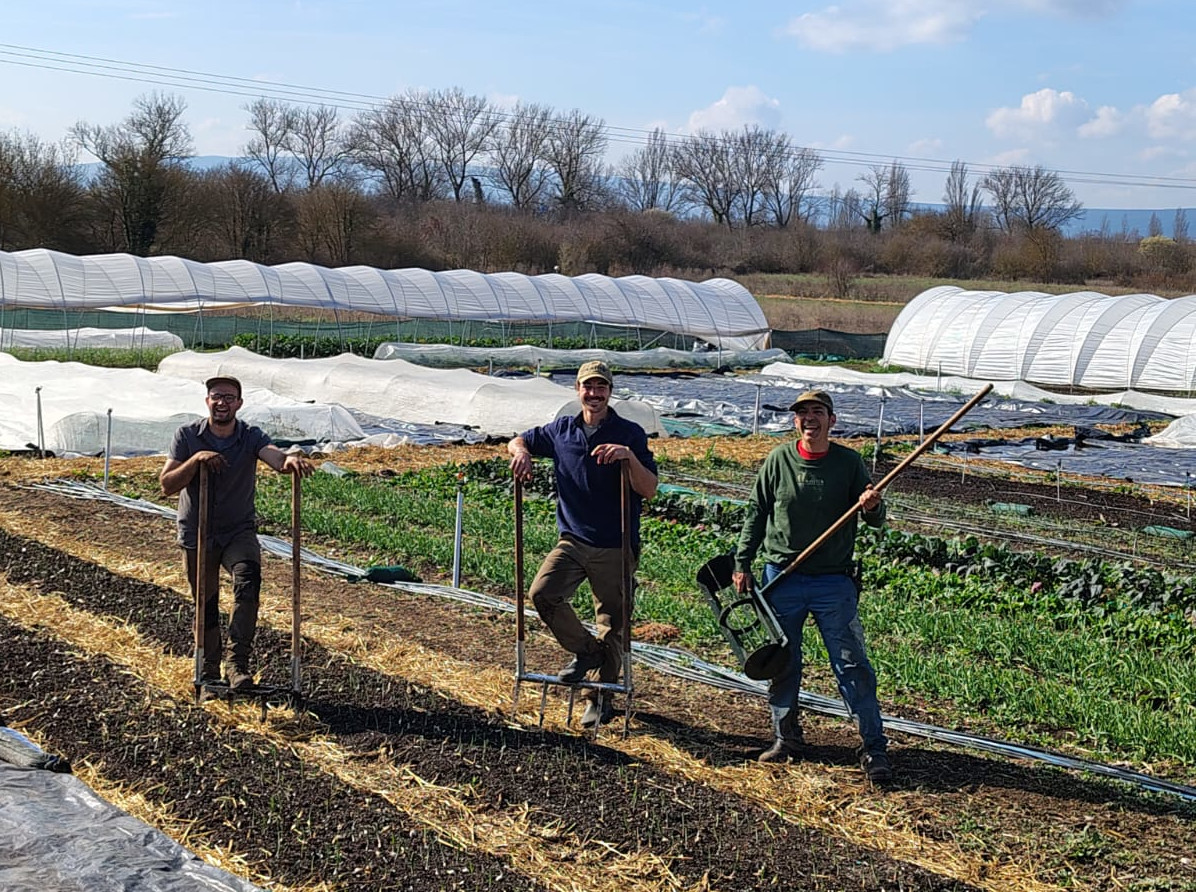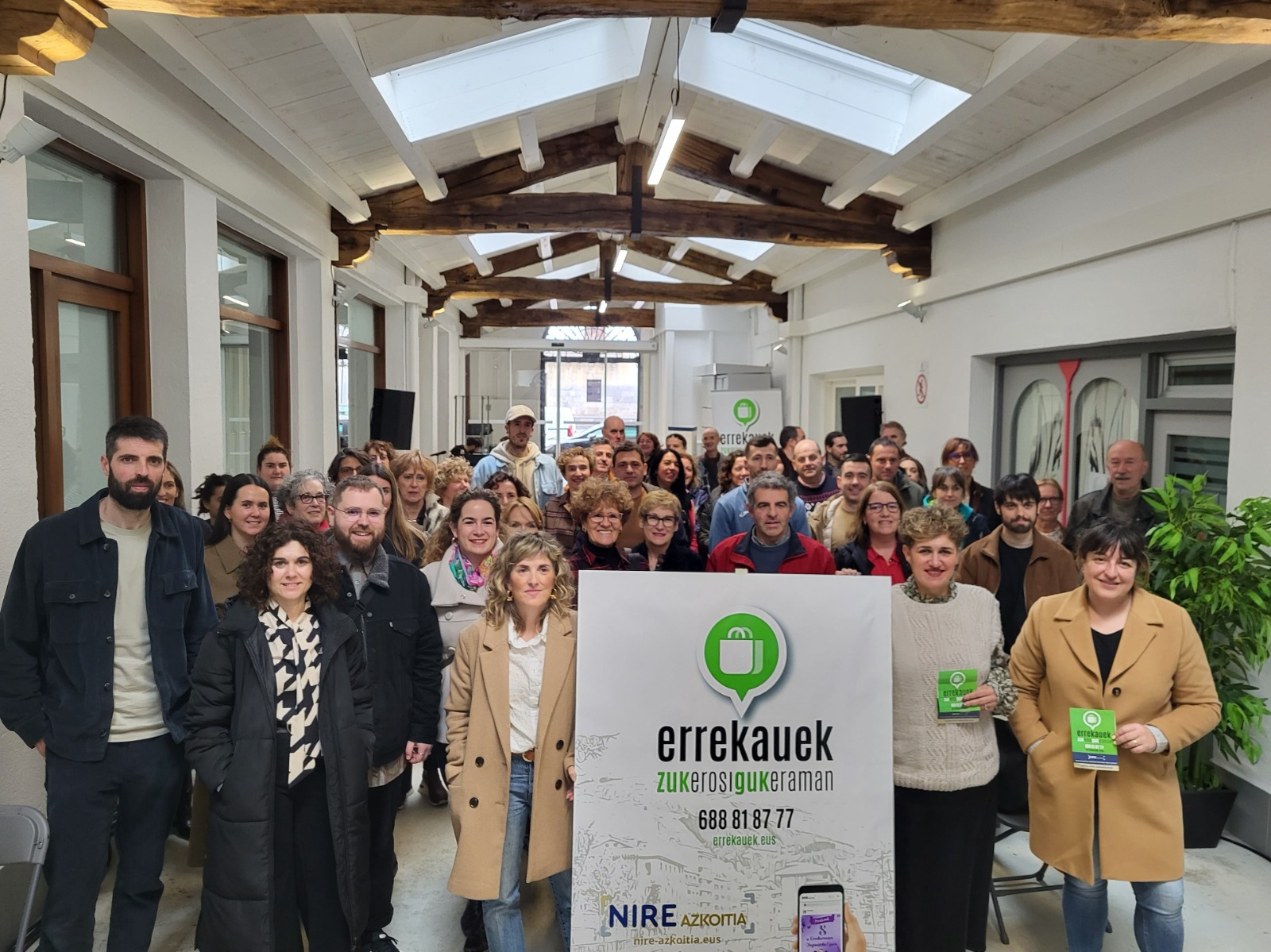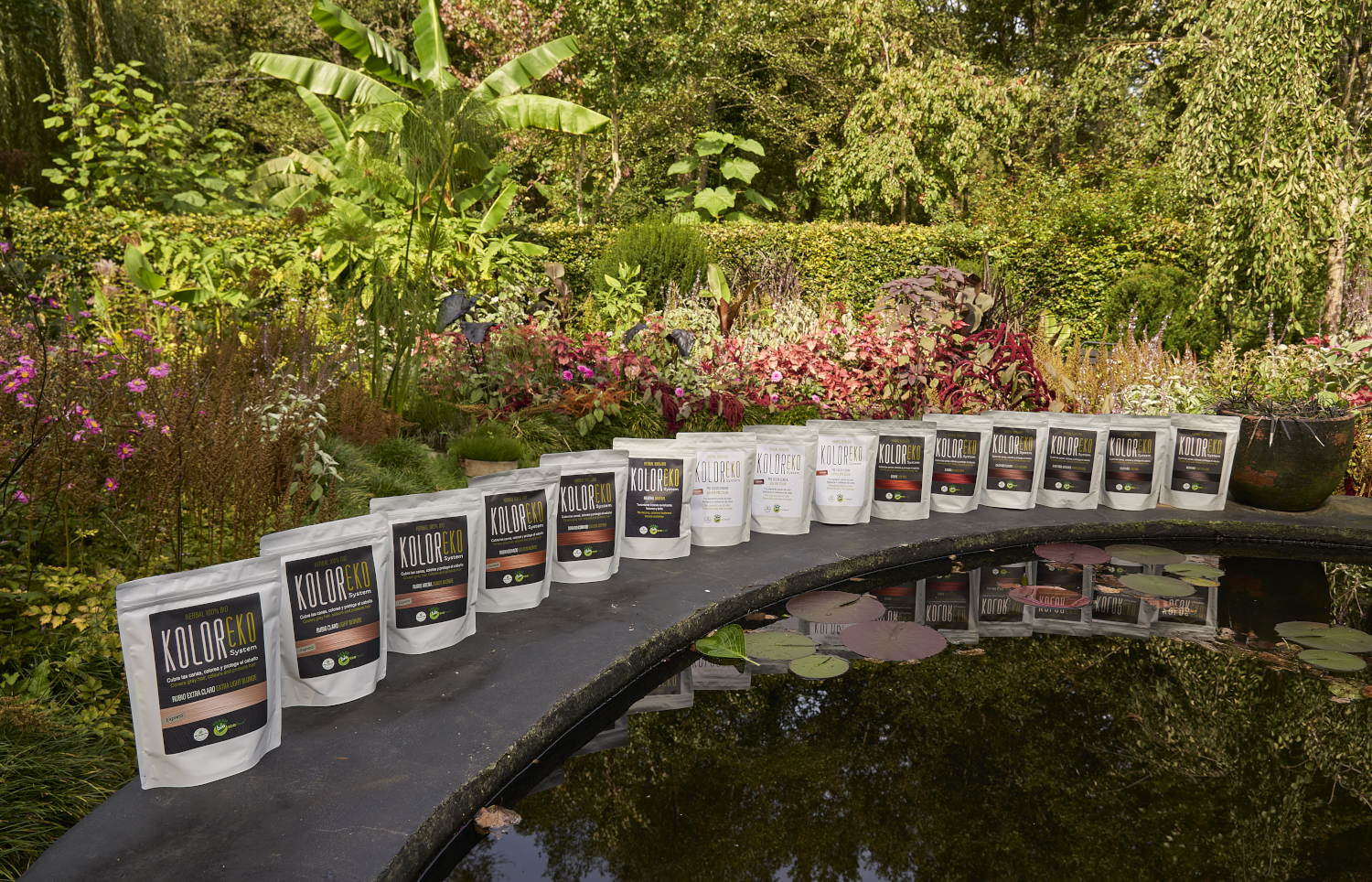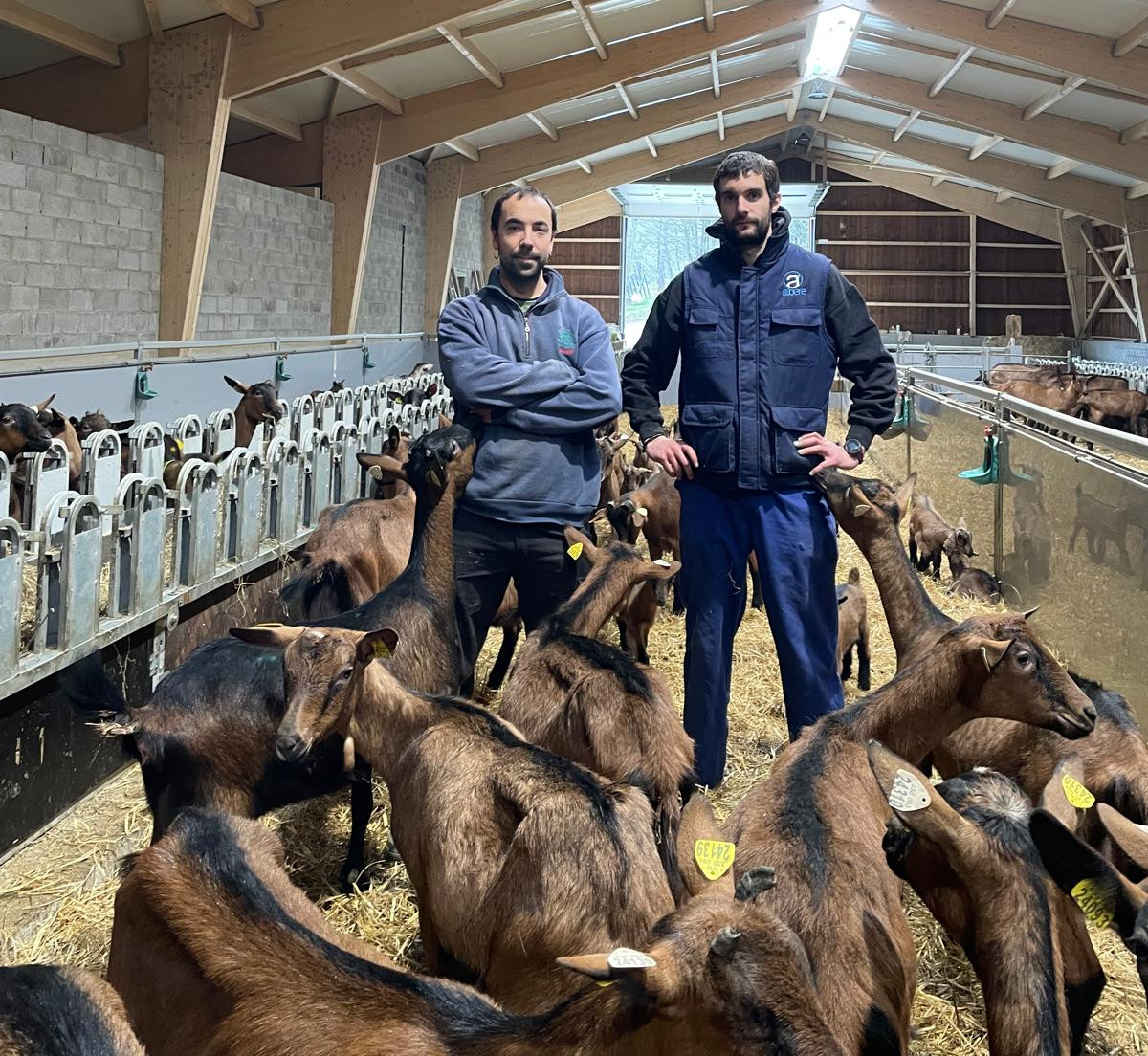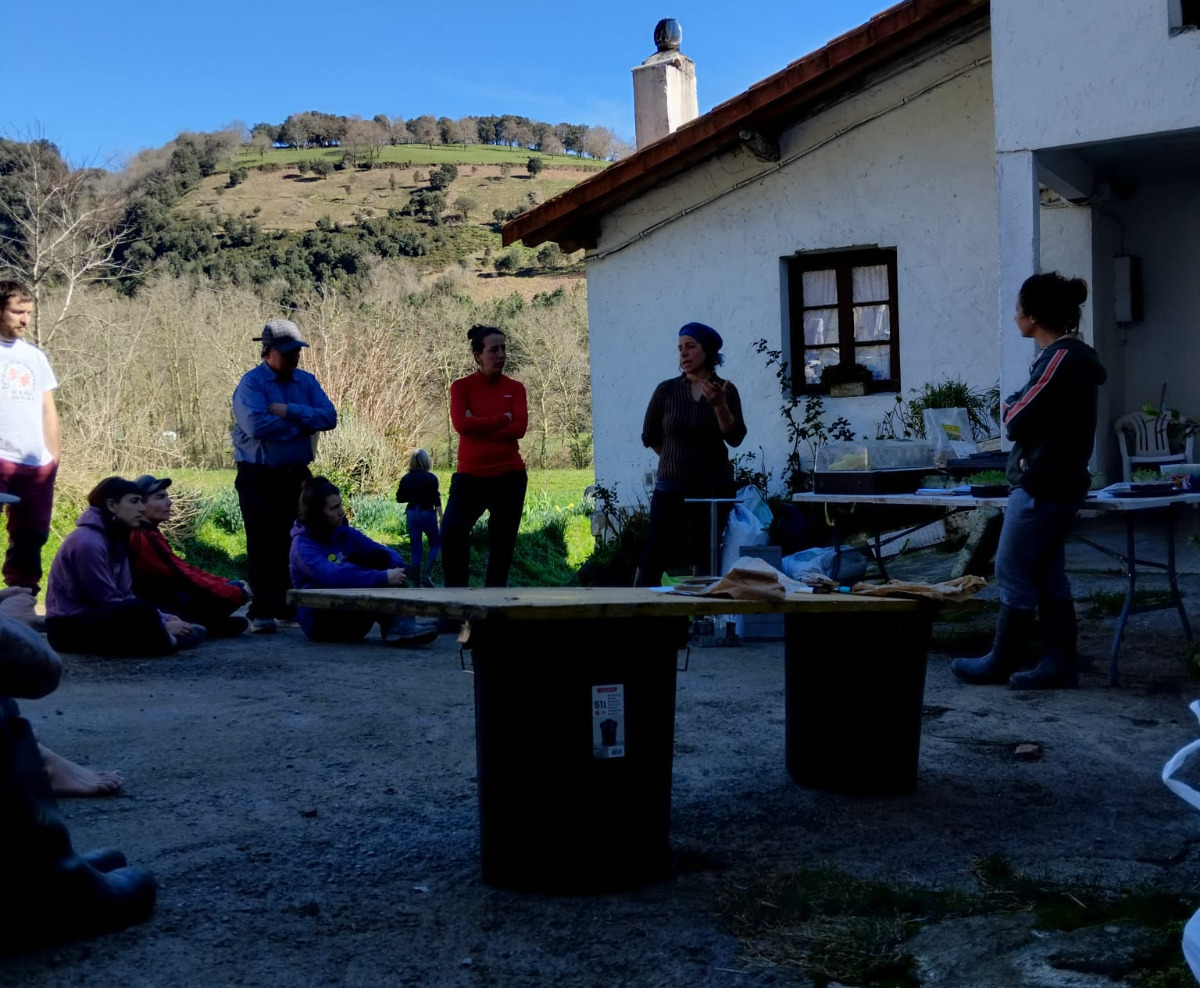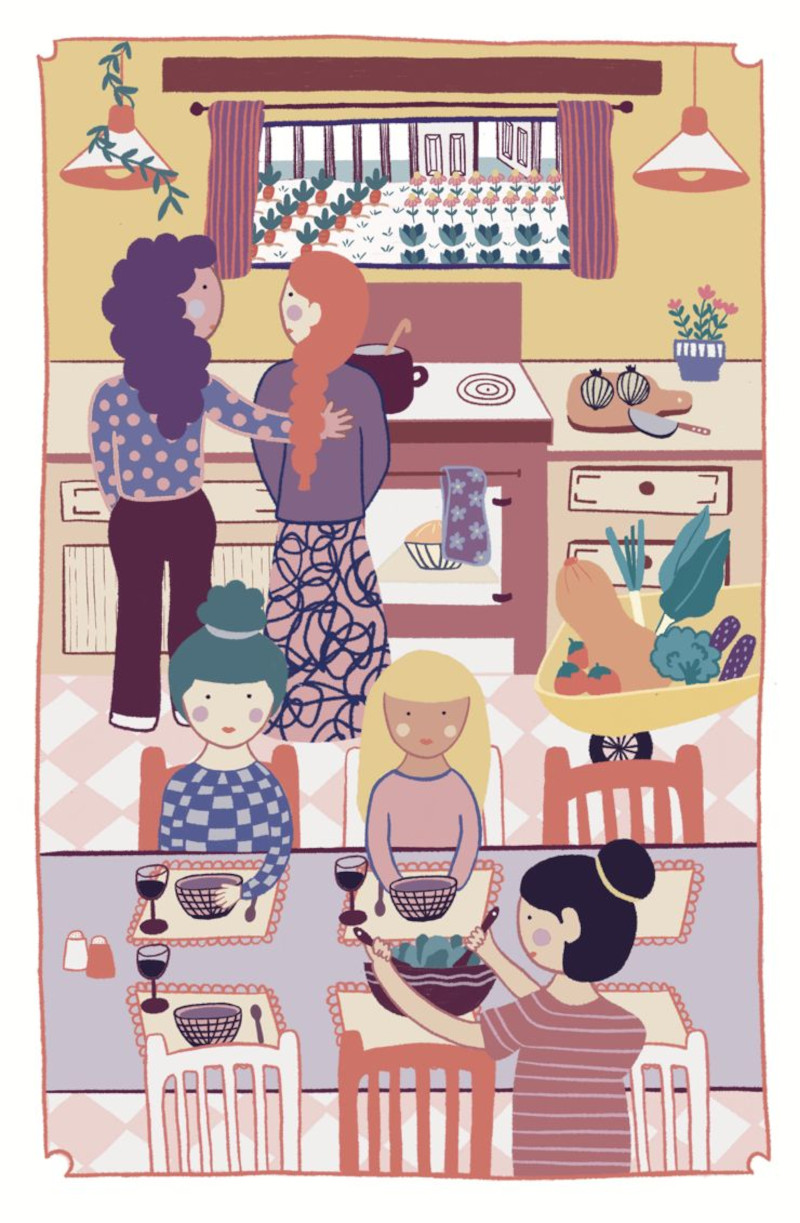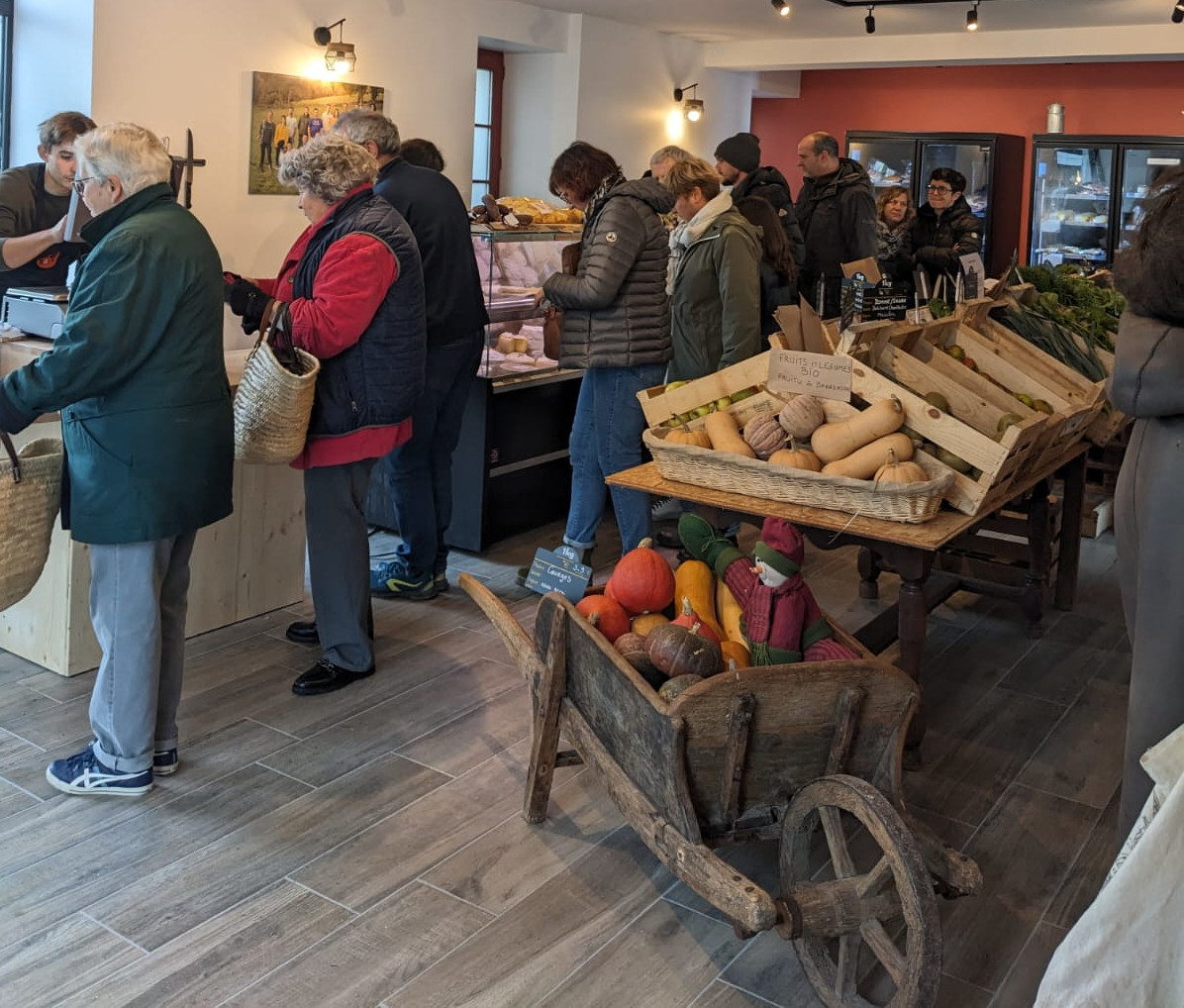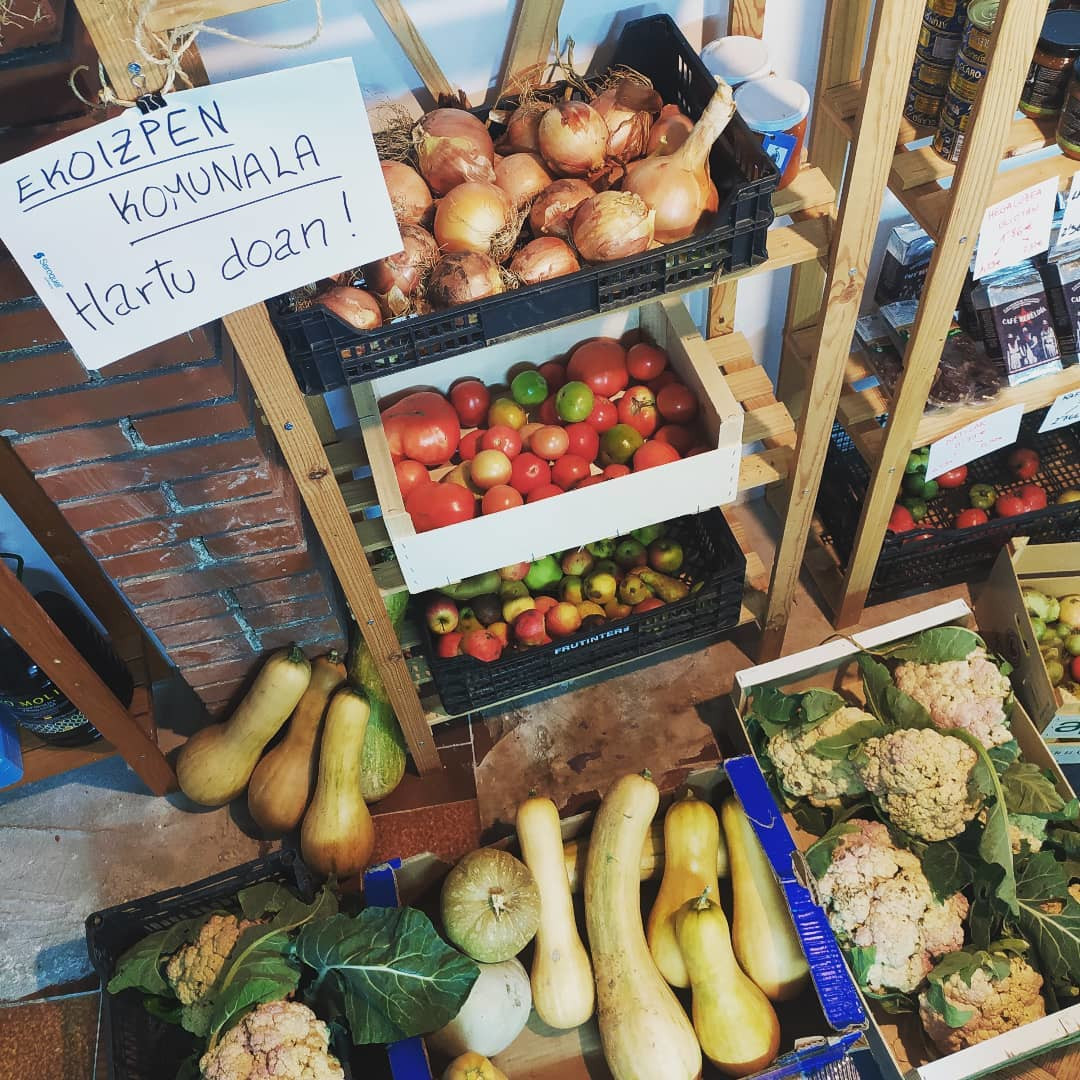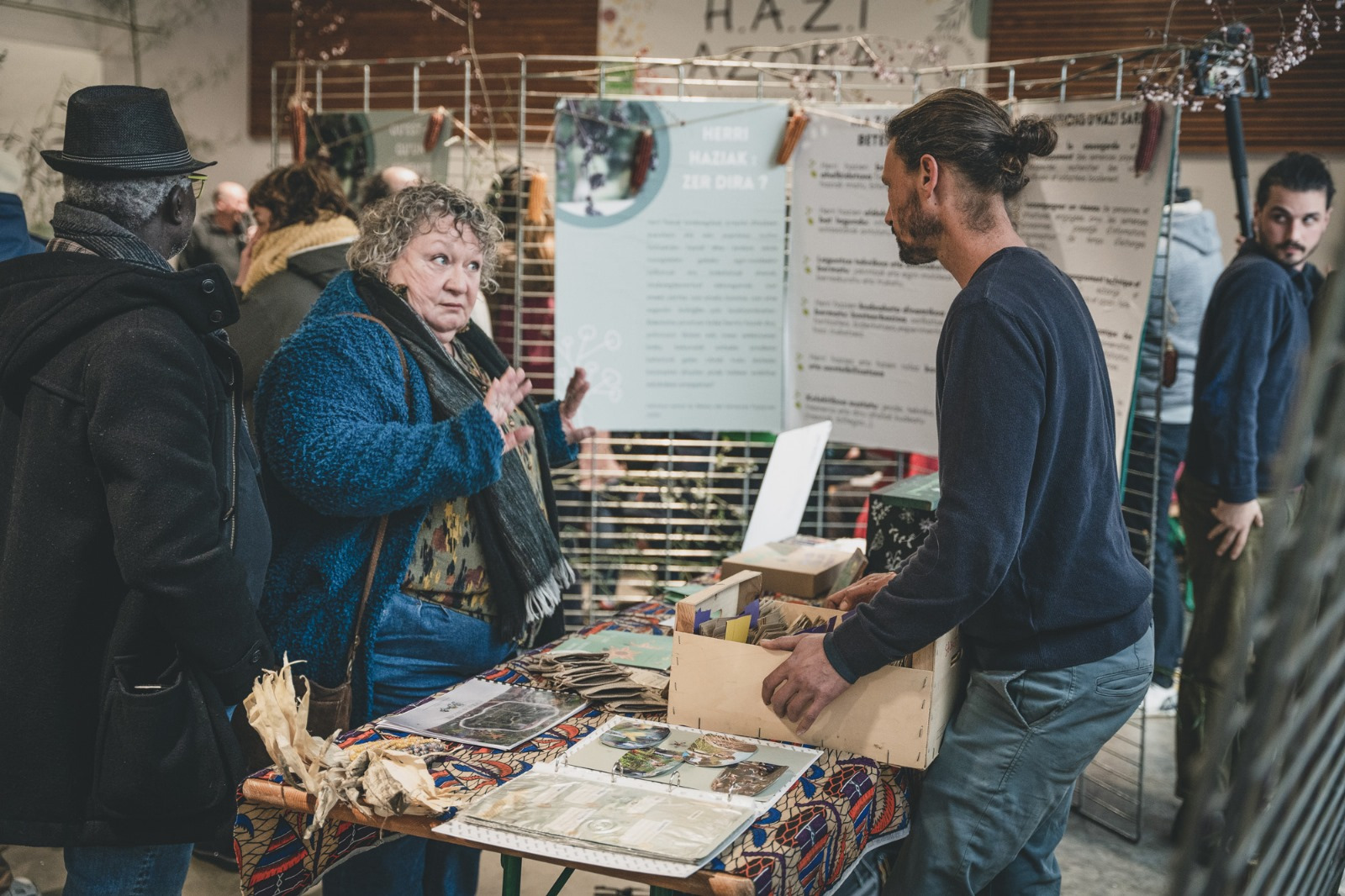Agroecological project of a young Alavese in Sakana
- Before moving to Navarre, the young Vitorian Asier Ordoño tried to live from the land on the Alavesa Mountain: “I first went to my grandmother’s house to live with her and set up a goat project.” He had studied agroecology in Arkaute and his intention was to get land on the mountain. However, he did not succeed at his grandmother’s house, and finally in 2018 he found in Uharte Arakil a plot of 2.7 hectares, suitable for the project he wanted to boot. It has orchard, fruit trees and chickens, and is dedicated for direct sale in the Sakana and in the area of Vitoria-Gasteiz.

In the early years, Ordoño combined the agricultural project with that of the tabernacle. In January of this year, however, he has left the premises and has been fully involved in the production: “When I arrived, I planted about 200 fruit trees of different species, always prioritizing old indigenous varieties.” It also has 50 chickens: “I have a mobile chicken cooker and every three days I change it so that they have fresh grass and enhance the microbiology of the earth.”
Ordoño is dedicated to selling eggs and has prepared a kind of box in a corner of the land, so that when people pass they can take the eggs directly. “There I leave the dozens with the price and a pot to leave money. It works very well,” he says. The third pillar of the project is an orchard of 1,200 square meters. “From the beginning my intention has been to diversify production to make the project sustainable,” he says. It combines these three main pillars with other activities. For example, this year, both of you and your partner have also done ointments with medicinal plants.
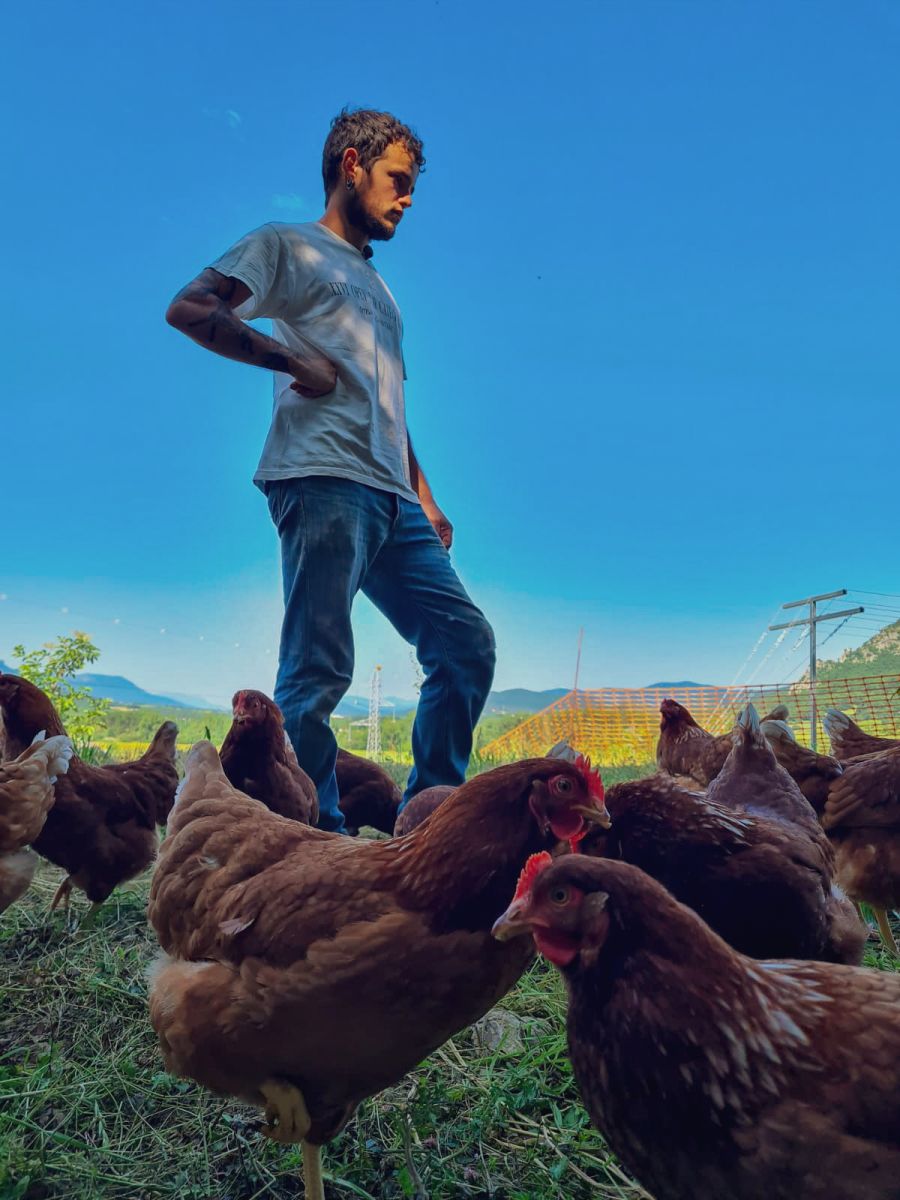
Young people, eager to start
Ordoño's intention for next year is to move to 150 chickens and increase the production of the vegetable garden, for which he plans to incorporate a second person into the project. “Seeing the demand exists, and in order to reconcile work and personal life, the goal now is to extend the project to another person.” Through a message, Nadia announced that he was looking for a colleague and was surprised at the answer he had received: “Many people called me, from Gipuzkoa, from Pamplona, from Leitza, from Sakana… the young people are willing and eager to enter this type of project, but the problem is that access to land is very difficult and the bureaucracy is terrible.”
Although the project is gradually growing, Ordoño wants to continue working on a small model, following the principles of agroecology: “I have no seal, but I am working as I have learned in Arkaute: alternating and associating crops, using agroecological techniques.” As far as water use is concerned, a complete hydrological design has been carried out on the ground. The roots take advantage of irrigation water using a technique designed by Habitat Design.
Duela lau urte abiatu zuten Azpeitian Enkarguk proiektua, Udalaren, Urkome Landa Garapen Elkartearen eta Azpeitiako eta Gipuzkoako merkatari txikien elkarteen artean. “Orain proiektua bigarren fasera eraman dugu, eta Azkoitian sortu dugu antzeko egitasmoa, bere izenarekin:... [+]
Donostiako Amara auzoko Izko ileapaindegi ekologikoak 40 urte bete berri ditu. Familia-enpresa txikia da, eta hasieratik izan zuten sortzaileek ile-apainketan erabiltzen ziren produktuekiko kezka. “Erabiltzaileen azalarentzat oso bortzitzak dira produktu gehienak, baina... [+]
Ubidekoak (Bizkaia) dira Imanol Iturriotz eta Aritz Bengoa gazteak. “Lagunak gara txikitatik, eta beti izan dugu buruan abeltzaintza proiektu bat martxan jartzeko ideia”, azaldu du Iturriotzek. Nekazaritzari lotutako ikasketak izan ez arren, baserri munduarekin eta... [+]
Iruñean bizi ziren Iñaki Zoko Lamarka eta Andoni Arizkuren Eseberri gazteak, baina familiaren herriarekin, Otsagabiarekin, lotura estua zuten biek betidanik. “Lehen, asteburuetan eta udan etortzen ginen eta duela urte batzuk bizitzera etorri ginen”, dio... [+]
Gipuzkoako hamaika txokotatik gerturatutako hamarka lagun elkartu ziren otsailaren 23an Amillubiko lehen auzo(p)lanera. Biolur elkarteak bultzatutako proiektu kolektiboa da Amillubi, agroekologian sakontzeko eta Gipuzkoako etorkizuneko elikadura erronkei heltzeko asmoz Zestoako... [+]
Emakume bakoitzaren errelatotik abiatuta, lurrari eta elikadurari buruzko jakituria kolektibizatu eta sukaldeko iruditegia irauli nahi ditu Ziminttere proiektuak, mahai baten bueltan, sukaldean bertan eta elikagaiak eskutan darabiltzaten bitartean.











